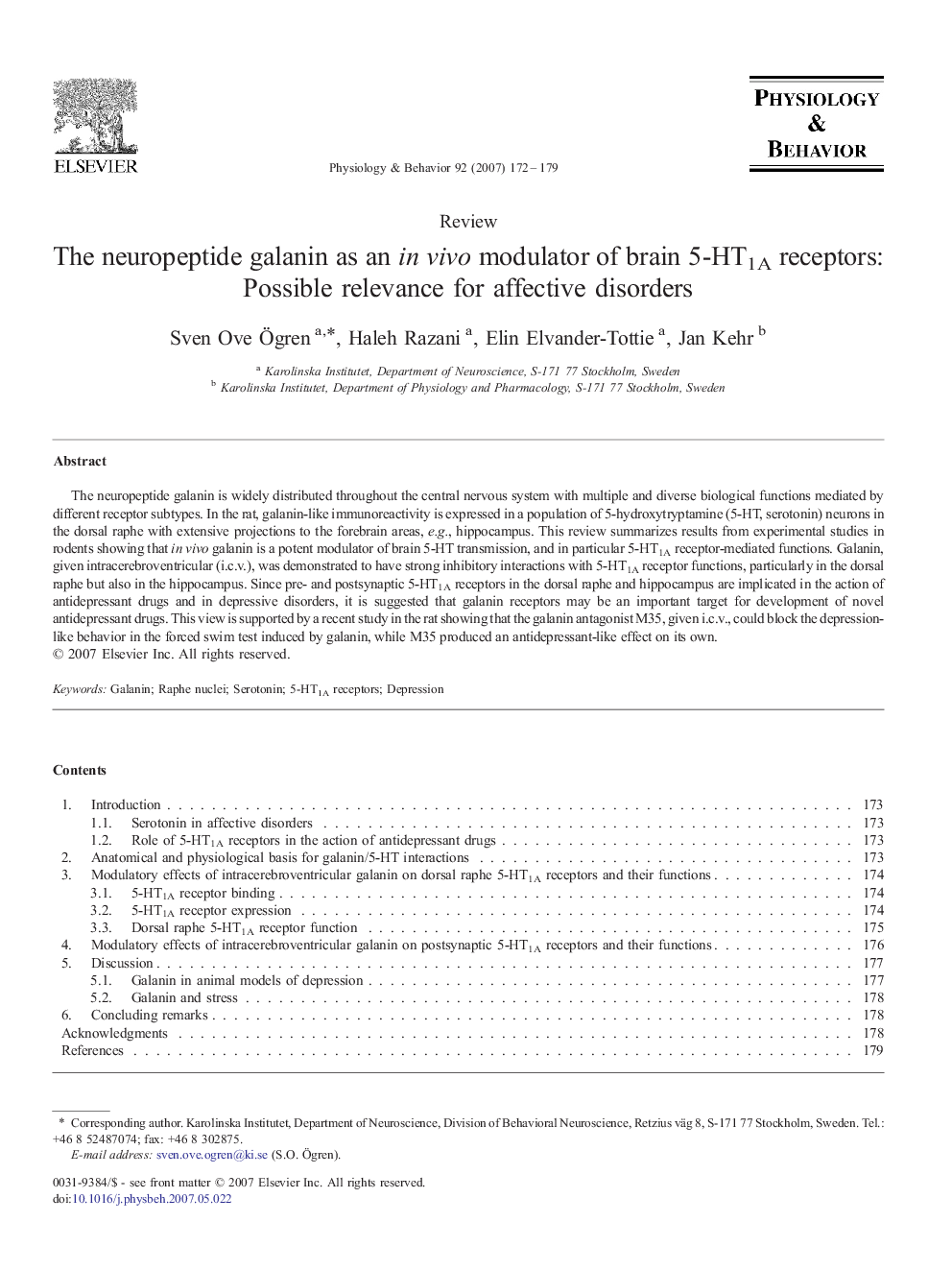| Article ID | Journal | Published Year | Pages | File Type |
|---|---|---|---|---|
| 2845979 | Physiology & Behavior | 2007 | 8 Pages |
The neuropeptide galanin is widely distributed throughout the central nervous system with multiple and diverse biological functions mediated by different receptor subtypes. In the rat, galanin-like immunoreactivity is expressed in a population of 5-hydroxytryptamine (5-HT, serotonin) neurons in the dorsal raphe with extensive projections to the forebrain areas, e.g., hippocampus. This review summarizes results from experimental studies in rodents showing that in vivo galanin is a potent modulator of brain 5-HT transmission, and in particular 5-HT1A receptor-mediated functions. Galanin, given intracerebroventricular (i.c.v.), was demonstrated to have strong inhibitory interactions with 5-HT1A receptor functions, particularly in the dorsal raphe but also in the hippocampus. Since pre- and postsynaptic 5-HT1A receptors in the dorsal raphe and hippocampus are implicated in the action of antidepressant drugs and in depressive disorders, it is suggested that galanin receptors may be an important target for development of novel antidepressant drugs. This view is supported by a recent study in the rat showing that the galanin antagonist M35, given i.c.v., could block the depression-like behavior in the forced swim test induced by galanin, while M35 produced an antidepressant-like effect on its own.
